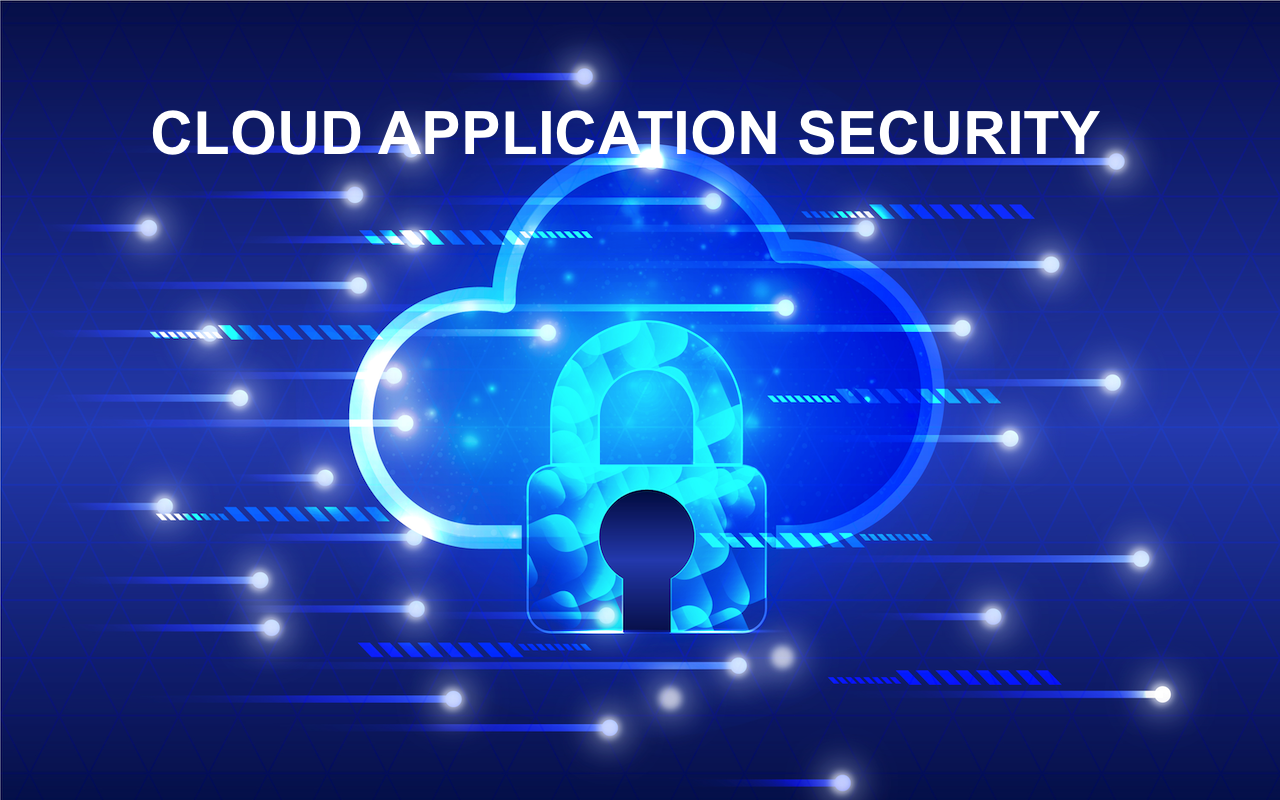
The surge in cloud storage today is not a new normal. From companies to individual users, people rely on cloud-based applications to store their products (photos, videos, documents, and others). It has also been widely seen that local storage usage today is less than yesterday; this demand reduction has been seen over the past few years.
The global cloud storage market has been growing rapidly and is expected to reach nearly $300 billion by 2025. In fact, 43% of IT decision-makers consider cloud storage a critical part of their asset management. As the demand grows each year, entrepreneurs are switching to these storage models. However, there is a primary concern involved with the cloud, which is “cloud computing security.”
You may be wondering about a few things currently. How can you secure your cloud-based applications? What specific methods will you use? Should you opt for cybersecurity services? This blog covers an in-depth understanding of the crucial insights on cloud application security and the best practices you can implement.
The Importance of Cloud Application Security
The security of cloud applications is crucial today. The increasing number of cyberattacks, digital thefts, and data breaches highlights the critical need for this. Businesses increasingly rely on cloud applications to store and process their sensitive data. However, they must understand the risks and threats associated with it. Some of the primary reasons through which this can happen include:
- Using legacy technology invites hackers to gain unauthorized access to cloud applications using the advanced tech stack, leading to financial loss.
- Failure to implement strong encryption and support systems leads to reputation and data loss.
- When a business violates its compliance with its cloud application, it leads to serious legal consequences.
The amount of data cloud applications hold is vast and also sensitive. This includes the user’s basic information, financial records, and intellectual properties. A single vulnerability can lead to major data breaches, information loss, and reputational damage. Hence, organizations must ensure security across distributed and dynamic cloud environments.
The Evolving Landscape of Threat
Over the years, the increased adoption of cloud computing has also opened the doors to threats across the entire cloud environment, such as the threat of losing crucial information and data breaches. You can understand that attackers who seek an opportunity to attack earlier are now attacking precisely on target, and attacks are highly sophisticated. From exploiting misconfigurations to using insecure APIs, hackers gain unauthorized access and steal crucial items.
1. API Exploitation
APIs are essential for integrating a cloud application. They serve as the communication bridge that enables different products and services to interact within the cloud environment. However, over the past years, the rise in API exploitation has increased. Hackers target APIs that are poorly secured and gain unauthorized access to sensitive data.
2. Ransomware-as-a-Service (RaaS)
One trend that cybercriminals use to target cloud infrastructure is malicious cyberattacks. In these attacks, they gain access to and encrypt users’ data stored in cloud applications, rendering it inaccessible to the owner. To decrypt the data, hackers demand a ransom in cryptocurrency to let users access their files.
3. Advanced Persistent Threats (APTs)
Cyberfrauds/hackers/attackers who use sophisticated and advanced techniques to gain access to the cloud environments for an extended period of time. As a result, attackers steal valuable and critical user data.
4. Insider Threats
Not outside but inside threats hurt severely. You can curate or analyze how an outside attacker can target you and, based on that, make specific changes to eliminate it. But employees with crucial data/information, if they intentionally or unintentionally leak it, can pose a significant threat to cloud application security.
Top Cloud Application Security Risks That You Should Know
How can you create a system that dissolves it without understanding what threat you should be aware of? It’s more like finding glitches in the code that have yet to be created. Similarly, understanding where the threat originates is the first step toward building an effective defense. Here are some of the top risks that are associated with the security of cloud applications:
| Security Risk | Description | Real-world Example |
|---|---|---|
| Misconfiguration | Incorrect cloud settings expose data or services. | AWS misconfiguration caused a significant data breach at Capital One in 2019. |
| Insecure API | Not following best practices to secure APIs leads to unauthorized access to data. | 2018, Facebook faced an API-specific cloud security challenge, exposing 50 million accounts. |
| Account Hijacking | When credentials are compromised, attackers gain full access to cloud accounts. | Phishing is commonly used to hijack users’ accounts on cloud applications. |
| Data Leakage | When sensitive data stored in cloud storage is exposed accidentally. | On AWS or GCP, cloud buckets are easily accessible. |
| Lack of Visibility | When blind spots are found in multi-cloud or hybrid environments. | With multiple cloud providers, unified data monitoring becomes a risk, causing a security concern. |
What are the Core Pillars of Cloud Application Security?
Security is of paramount importance, and every organization must focus on this aspect and implement steps to improve it, as it can enhance its reputation in the market. Because of the surge in the usage of cloud services by businesses and individuals alike, cloud applications are becoming the prime target for cybercriminals these days. Hence, to effectively secure cloud applications, organizations must build their strategy on the core pillars:
1. Identity and Access Management (IAM)
A business must insist on creating this cloud security parameter in its application to restrict the access of unauthorized accounts. This means that you can decide who has access to what and what sort of authorization it requires. Who gets access to a particular API or database? How can the system identify that it's you? Role-based access controls can determine who has access to your application.
2. Data Protection
A business must ensure that data encryption is followed. You can encrypt the data of your cloud application both at rest and in transit, utilizing robust protocols. Tokenization and data masking (where necessary) can also help secure sensitive data.
3. Application Security
Ensure that you follow the importance of every pillar while considering the cloud security at its best. You can opt for application security services to safeguard your cloud application. Your hired team can secure the application by performing crucial activities like:
- Regular code reviews to ensure no code glitches are left unseen
- Performing penetration testing via simulated cyberattacks to find and fix security loopholes
- Implementing Web Application Firewalls to filter incoming and outgoing traffic and block malicious attacks before they reach
A business can safeguard its cloud application by working with cybersecurity experts or following all the crucial steps on its own.
4. Incident Response
It is crucial to monitor and anticipate incident responses. When it comes to incident response, you must focus on automating it. This can be done by deploying tools like continuous monitoring, anomaly detection, and logging. You can establish an incident response plan. Planning can help identify and predict threats by 90% and implement the required measures to overcome the threats. This will help safeguard the maximum data of your cloud application and improve the reputation of your business in the market.
Best Practices to Secure Cloud Applications
This is not just a plug-and-play approach. Securing a cloud application is a comprehensive and proactive approach. You must follow best practices to safeguard cloud applications. Here are some of them:
1. Conduct a Cloud Security Assessment
It is crucial to know the security of your cloud application. Hence, you must initiate the process by performing a detailed application assessment.
- Check on every measure you have taken — was it helpful or does it require improvement?
- Review whether your application has previously faced data breaches
- Identify any vulnerabilities that may have been left unaddressed
- Evaluate for misconfigurations with the cloud service provider
This way, you gain a complete audit of your cloud application and can take informed steps to strengthen its security.
2. Implement DevSecOps
Based on your application's assessment, you can implement robust security measures into every phase of the SDLC. Utilize tools like static code analysis, automated vulnerability scanning, and secrets management to help detect and fix security lapses. However, these practices require an advanced skill set, so partnering with experienced professionals can be a smart move.
3. Secure APIs
After securing every part of your SDLC and implementing APIs for seamless communication, it’s essential to protect these APIs from unauthorized access. Secure your APIs using API gateways, rate limiting, OAuth 2.0, and by conducting regular audits of all API endpoints.
4. Encrypt Everything
Even with secure APIs and DevSecOps in place, encryption remains vital. Cybercriminals may still target your data using techniques like APTs or RaaS. Therefore, ensure your data is encrypted both at rest and in transit. Tools like AWS KMS and similar services can simplify and enforce encryption across all stages.
5. Perform Regular Penetration Testing
Make sure your internal team or hired experts conduct regular penetration testing to simulate real-world cyberattacks. This proactive approach helps identify and fix vulnerabilities before attackers can exploit them, keeping your cloud application secure and resilient.
Conclusion
These are the quintessential things you must know about cloud application security. Cloud application storage is quickly growing and is one of the moving targets for attackers and hackers today. Hence, consider keeping the cloud storage secure to maintain a good reputation in the market. Businesses considering this crucial aspect a shared and continuous responsibility are better positioned to protect against data breaches, maintain compliance, and preserve users’ trust. Hence, cloud application security measures should be included to safeguard crucial data.
Featured Image by Freepik.
Share this post
Leave a comment
All comments are moderated. Spammy and bot submitted comments are deleted. Please submit the comments that are helpful to others, and we'll approve your comments. A comment that includes outbound link will only be approved if the content is relevant to the topic, and has some value to our readers.



Comments (0)
No comment